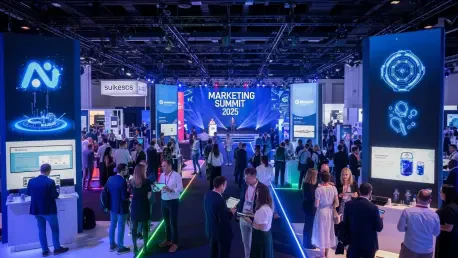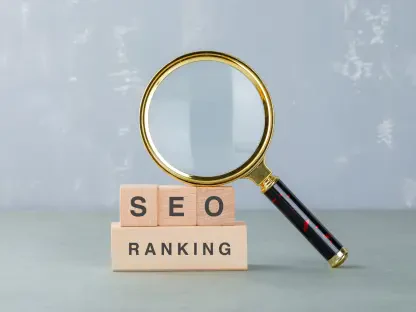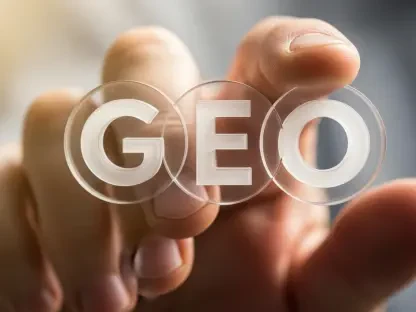Setting the Stage: A New Era of Engagement
Imagine a world where digital screens no longer hold the sole key to influence, and thousands of fans flock to a single venue just to meet a favorite content creator in person. This is the reality of the creator economy in 2025, where a seismic shift toward in-person events is redefining how influence is built and monetized. With the industry already valued at $191 billion, the move from online interactions to real-world experiences signals a profound change driven by fan demand for authentic connections. This market analysis examines the forces propelling this transition, unpacks critical data and trends, and forecasts the trajectory of an industry poised for exponential growth. The insights provided here aim to equip creators, brands, and marketers with a clear understanding of why live engagements are becoming a cornerstone of modern influence.
Market Dynamics: Unpacking the Shift to Live Experiences
Digital Saturation Sparks Demand for Tangible Interactions
A key trend reshaping the creator economy is the widespread digital fatigue among social media users, particularly among Gen Z and Millennials. Surveys indicate that 41% of U.S. social media users have attended at least one influencer-led event in the past year, seeking a break from the endless scroll of online content. These gatherings offer a unique emotional resonance, with 84% of attendees forming new connections and 45% reporting a boosted sense of self. Creators are tapping into this hunger for authenticity by hosting innovative events like run clubs and collaborative hackathons, which prioritize vulnerability and community over mere entertainment. Despite challenges such as geographic limitations and logistical complexities, the pull of face-to-face interaction continues to outweigh digital-only engagement for a significant portion of fans.
Financial Opportunities Fuel Event Expansion
The financial landscape of the creator economy reveals why in-person events are gaining traction. With the market projected to grow to $528.39 billion by 2030 at a compound annual growth rate of 22.5%, live events are emerging as a substantial revenue driver. Data shows a 500% surge in ticket sales for influencer-led events this year compared to last, with costs often 40% lower than traditional entertainment, broadening accessibility. High-profile examples, such as podcast tours selling out in under 15 minutes and charity sports matches drawing tens of thousands of live attendees alongside millions of online viewers, highlight the profitability of hybrid models. However, smaller creators face risks with high upfront costs and uncertain attendance, underscoring the need for strategic planning to capitalize on this lucrative trend.
Evolving Fan Expectations Shape Event Formats
Fan preferences are another critical force steering the creator economy toward live experiences. Research reveals that 46% of social media users express excitement for in-person interactions, with only a tiny 2% considering them overhyped. Popular formats include meet-and-greets, product launches, and interactive workshops, with ticket prices ideally ranging between $10 and $50, though over a third of fans are willing to pay more for premium access. Massive turnouts at events like a teen creator’s skincare launch, which drew nearly 87,000 attendees at a major mall, demonstrate the magnetic appeal of well-executed activations. Regional disparities in access and lingering misconceptions about affordability remain hurdles, yet tailoring events to local interests and maintaining price sensitivity could unlock even greater market participation.
Future Projections: Hybrid Models and Experiential Growth
Blending Online Reach with Offline Impact
Looking ahead, the creator economy is set to evolve through hybrid models that merge the intimacy of in-person events with the global reach of digital streaming. Tours by major content collectives, nearly sold out across dozens of shows, point to the sponsorship potential and emotional depth that live experiences offer—elements unattainable through virtual platforms alone. Technological innovations, such as augmented reality enhancements for meet-and-greets and AI-driven event logistics, are expected to further personalize fan interactions over the next few years. As digital fatigue persists, industry forecasts suggest creators will increasingly invest in experiential marketing, with micro-influencers hosting small-scale gatherings and larger stars filling stadiums, creating a spectrum of engagement opportunities.
Corporate Investment Signals Long-Term Commitment
Corporate interest in creator-led events is another indicator of sustained market growth. Reports show that 74% of Fortune 1000 marketers plan to increase budgets for live events in the coming years, reflecting confidence in their return on investment. Brands are already seeing success through partnerships with influencers for immersive activations, such as vehicle launches and fitness studio sessions, which generate millions of views and engagement rates as high as 12.3% on social platforms. This trend points to a future where experiential marketing becomes a core strategy, necessitating compliance with safety regulations for large gatherings while fostering innovation in how events are designed and executed to maximize impact.
Strategic Reflections and Forward-Looking Insights
Reflecting on the market analysis, it becomes evident that the creator economy’s pivot to in-person events marks a transformative chapter in how influence is cultivated. The overwhelming fan enthusiasm, coupled with staggering financial returns and robust corporate backing, highlights the enduring appeal of real-world connections in a digitally saturated age. For creators, the path forward involves experimenting with local meetups to build loyalty while scaling up to larger tours as resources allow. Brands should focus on co-creating memorable experiences with influencers, integrating shareable elements like interactive displays to amplify organic reach. Fans, meanwhile, can explore accessible events within budget-friendly price ranges and leverage social platforms to stay informed about upcoming activations. As the industry continues to balance online presence with offline engagement, prioritizing trust and community will remain essential to sustaining growth and relevance in this dynamic landscape.









